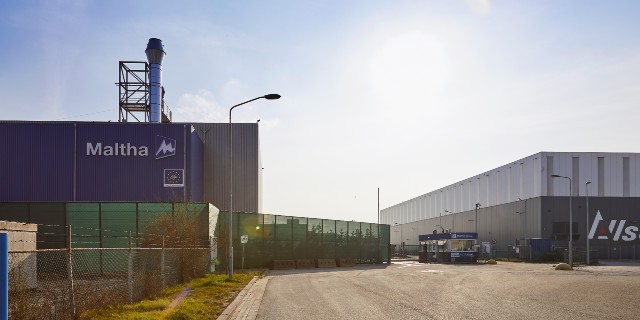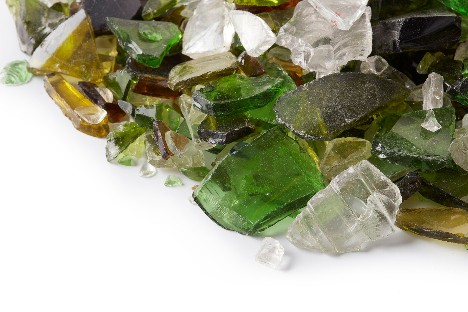Hollow glass
Bottles, pots, bowls and glasses are examples of hollow glass. Also called packaging glass. Hollow glass mostly comes from municipal collections, waste recycling centres, the hospitality sector and retailers. To recycle hollow glass effectively and efficiently, Maltha developed unique advanced processing facilities in cooperation with Delft University of Technology and various machine builders. Maltha has a processing capacity of 1.3 million metric tons of hollow glass per year at its facility in Heijningen.
You can turn white glass into coloured glass, but not the other way round. White glass is therefore worth more than mixed glass. The separation of packaging glass by colour is therefore valuable. Waste collectors therefore use containers and collection vehicles with separate colour compartments.
Hollow glass can contain different types of impurities. There are glass-related impurities such as labels, lids and corks. These impurities pose a problem for the production process of new glass and must therefore be removed carefully. Other contaminants not related to glass are not allowed in glass waste. These include ceramics, stone, porcelain, metals and plastics.
The glass goes through a chain of sophisticated steps to remove the various impurities. The cullet passes through magnets, sieves, cyclones, eddy current separators, laser and camera technology and even X-ray detection. As a result, every 1,000 kg of glass only contains 10 to 25 grams of impurities. Het resultaat is dat uiteindelijk iedere 1.000 kilo glas nog slechts 10 tot 25 gram vervuiling bevat.

To recycle glass waste properly, the waste flow must meet a number of conditions. We call these acceptance conditions. These are guidelines that determine what kind and especially what degree of impurity is allowed in the glass waste.
If the degree of contamination is too high, the waste glass cannot be processed and must be rejected. Depending on the type and degree of contamination, the waste may be classified differently. For example, as construction and demolition waste or as bulk waste. The waste must then be processed in another (more expensive) way. Waste glass can also be contaminated with crystal and heat-resistant glass. The properties of these two specific types of glass have a negative impact on the quality of new glass. Crystal is glass with an enormously high lead oxide content, which means it is not permitted to be used as a raw material for new glass. Heat-resistant glass has a much higher melting temperature. Therefore, it is not suitable as a raw material for new glass. It can cause quality and safety problems in the production process.
The value of your waste glass is therefore largely determined by its degree of purity. Good collection methods and proper separation according to the acceptance conditions are therefore definitely worthwhile. Collectors also use these conditions to determine the quality of your waste.
|
Acceptance conditions Hollow glass |
Download |
Maltha can receive glass by lorry or by ship. For deliveries by lorry, it is important that the glass can be deposited loose. In case of delivery by ship, we plan this so that the ship can be unloaded.
Deliveries in a different way are possible after consultation.Please contact us.


